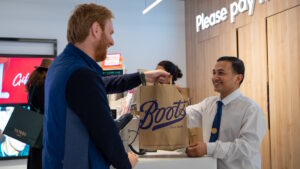By Justine O’Neill, Associate Vice President, Analytic Partners
Retail media has taken the advertising industry by storm. Its growth was turbocharged by the promised treasure trove of first-party data, and by brands seeking new ways to reach shoppers as Google phased out third-party cookies.
Despite Google’s plans being scrapped, retail media certainly hasn’t been a flash-in-the-pan trend. Today, we’re seeing advertisers spend one out of every five digital dollars on retail media networks (RMNs), according to our ROI Genome research. And it’s set to continue growing – ad spend in this area is expected to reach an extraordinary $140 billion in 2024, and $166 billion by 2025.
Although marketers are clearly gravitating toward this channel, often fighting with their sales teams to invest larger proportions of their budgets, the impact of retail media investments is often lost in space – and many brands are struggling to put it into the larger commercial context. Sales attribution and inconsistent measurement methods are driven by the widespread use of siloed and misleading metrics, like return on ad spend (ROAS). A purchase on Retail Media was likely influenced by many other media touchpoints before it.
Adding to that is poor data quality from RMNs. Since it is still the early days of the retail media era, retailers’ offerings are often still in a state of constant evolution, leading to murky, incomplete, and unstandardised data. And the growth of networks is not helping the problem. Worldwide, there are 216 retail media networks, and many of these retailers need to be approached and worked with separately. Brands must build their own roadmap, constantly searching for the easiest and best path for their business.
IAB Europe and the industry at large are working on a common language, which will hopefully standardise processes moving forward and resolve some of the detrimental and difficult fragmentation. But, there are ways in which brands can optimise their retail media strategy today, and navigate the wealth of customer data and purchasing insights to improve their investment. Once the objectives are set and data processes are clear, there are four steps brands can follow.
1- Bigger is often better
Scale is important when deciding which RMNs to work with. Brands need to prioritise executions with larger retailers that have more established networks. Their offer will likely be more mature and come with lower costs attached, as well as requiring less effort on data collection. For example, retail giant Walmart offers a wealth of shopper data, both pre- and post-purchase. The behavioural data it shares, as part of the Luminate platform, can support better targeting throughout the entire customer journey.
Alternatives like Instacart are newer to the game, and its ad revenue growth trails other digital peers. While it does well at outperforming the larger grocery market, it has challenges with brand budgets and off-site placements that might not make it a first choice.
These partnerships are a learning curve for both sides, but by working with the biggest retailers first, it’s easier to establish as a major player.
2 – Evolve to stay ahead
Evolving a brand needs to be a conscious decision, and that requires marketers to experiment with new offerings and technology. Instead of going all in on retail media alone, businesses should explore how video – a top short- and long-term driver – may offer a performance boost to their retail media campaigns. More specifically, they should explore opportunities to test or expand streaming video and connected TV executions, which deliver higher ROIs on average than other channels. This is particularly important as more and more advertisers are flooding this space. Rapid growth means rapidly competing with more and more voices.
But also within retail media, evolution is constant and should be monitored. Amazon Ads, for example, has recently unveiled a new, remote-enabled, interactive and shoppable ad format for Prime Video and live sports, which brands can start using in 2025. Opportunities like this can extend interaction and engagement with brand audiences since viewers can pause ads – triggering the option to learn more, add a product to their basket or suggest related products in swipeable carousels.
3 – There is power in off-site placements
Off-site placements can deliver wider reach and higher marketing response – at an often lower cost than onsite placements – so businesses need to ensure their retail media strategy has a heavy dose of off-site placements. It’s a process that combines first-party data with third-party media, which creates cohesive opportunities for brand advertisers.
The Co-op Media Network, which combines the retailer’s in-house team and agency partner Threefold, has focused on off-site with its offering, enabling brands to strategically connect their products to shoppers using off-site digital media channels.
Nearly half of advertisers say they currently activate off-site retail media when they’re working with a retailer. And of those, over two-thirds agree it’s a necessary part of their retail media strategy.
4 – Measure what matters
Businesses investing in retail media need to ensure they’re making their money work for them – and that will only be possible if they establish a rigid process for integrating retail media into their commercial measurement approach, despite the current data challenges.
Being certain about what data they actually need is key. Not all data offered is good data or needed data – it should all link back to the overall business objectives and previously defined KPIs. Only then can the true commercial impact be measured and understood as part of the full marketing mix. Being prepared and working closely with the retailers to ensure they can share good quality, granular data in a timely manner will allow for complete oversight and holistic measurement.
Getting ahead of the retail media boom
Retail media is still so young in relation to other channels available to marketers, and it isn’t easy to take care of. The industry is in a state of flux as retailers become publishers for the first time, like Ocado or The Very Group – which has just launched Very Media Group – and they begin to view brands as clients. On the flip side, the buying side will likely evolve, and it will be interesting to see whether there’s more centralisation or move to media agencies.
While the brand expectation is often instant success, everyone involved needs to learn to adapt to these constant changes. Retail media is not a silver bullet, but it’s here to stay, so brands must understand its real impact on their marketing efforts with the help of holistic measurement approaches.












